#mantellidae
Text

Variegated Mantella (Mantella baroni), family Mantellidae, Ranomafana National Park, Madagascar
Poisonous.
photograph by Charles J. Sharp
6K notes
·
View notes
Photo
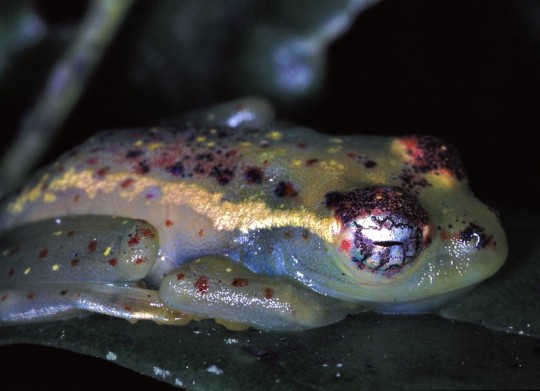
Botta’s bright-eyed frog (Boophis bottae) in Madagascar, Africa
by Bernard Dupont
#botta's bright eyed frog#frogs#amphibians#boophis bottae#boophis#mantellidae#anura#amphibia#chordata#wildlife: madagascar#wildlife: africa
606 notes
·
View notes
Text

Frog (Guibemantis pulcher)
Photo by Nick Garbutt
#frog#green frog#frogs#amphibians#guibemantis pulcher#guibemantis#mantellidae#madagascar#madagascar frogs#madagascar wildlife#tropical frogs#tropical#green#nature#wildlife
4 notes
·
View notes
Photo
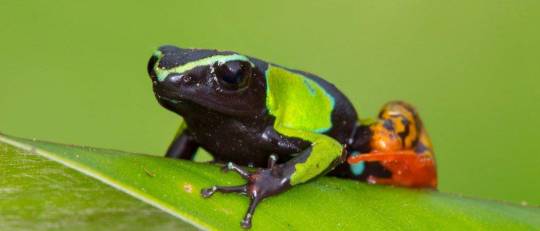
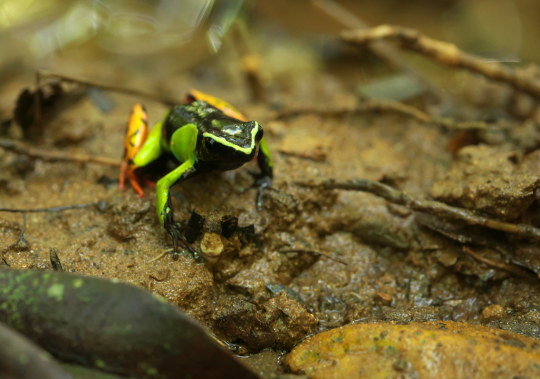
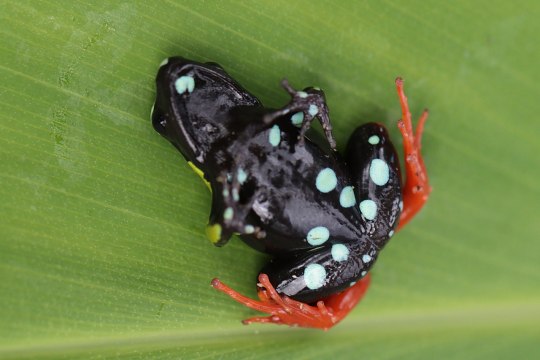

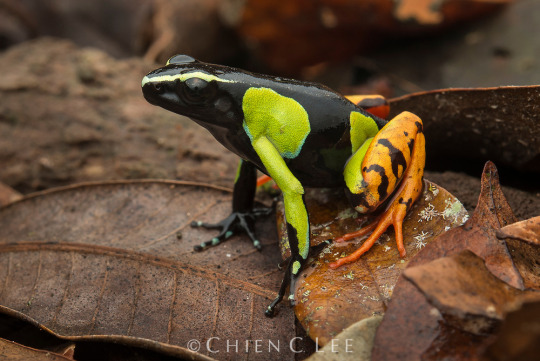
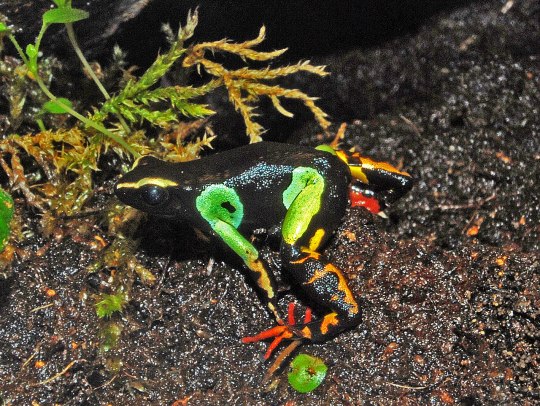
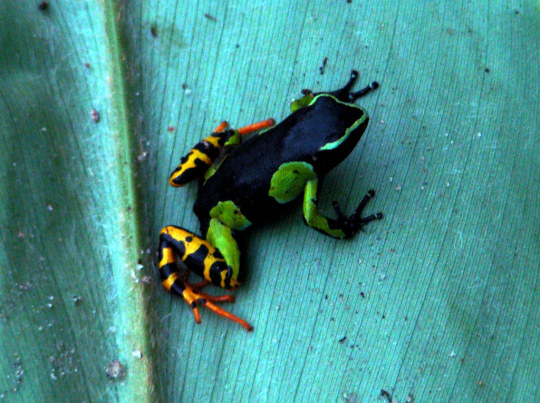
Baron's mantella, also known as the variegated golden frog or the Madagascar poison frog, is a species of small poisonous frog in the family Mantellidae which sports is native too East-Central Madagascar, inland from the east coast, and spanning north to south from Fierenana south to Andringitra. This moderately social species communicates via intense sequences of short, single-click notes throughout the day and inhabits rainforests, swamps, montane forest, bamboo groves, riverine woodlands and agricultural orchards. They are diurnal predators that feed upon ants, crickets, beetles, isopods, spiders, and mites. By ingesting these various poisonous/ venomous arthropods mantilla frogs are able to repurpose and secrete said toxins as pharmacologically-active alkaloid concentrations in their skin, in turn making the frogs themselves poisonous to potential predators. The intensity of this poison alkaloid can flux both temporally and geographically, depending on the frogs dietary diversity. Reaching around 1- 1.25 inches (28 -32mm) in length Baron’s mantella is the second largest species of mantella frog after the green mantella, with females being slighty heavier than males. The head & flanks are solid black. A yellowish rostral stripe is apparent, generally ending past the eye. The front limbs are yellow to green with this coloration continuing up the flanks into a large, rounded flank blotch. These flank blotches occasionally expand across the back and connect to the opposite side blotch, resulting in a more yellow dorsum. The hindlimbs are orange with irregular black stripes. The belly, throat, and limbs are black and marked with a few yellow to greenish, rarely blue blotches. Females can lay up to 130 unpigmented eggs in a single clutch, and almost always do so near a source of water, into which the resulting tadpoles get washed by rainwater. Under ideal conditions a barons mantella will reach sexual maturity at around 1 year of age and may live upward of 8.
#Baron's Mantella#mantella#frog#madagascar#poison frog#poison#variegated frog#golden frog#variegated golden frog#variegated#golden#pleistocene#pleistocene pride#amphibian
4 notes
·
View notes
Text
What Do Tree Frogs Eat
New Post has been published on https://www.petculiars.com/what-do-tree-frogs-eat/
What Do Tree Frogs Eat
Tree frogs will usually be seen on tall vegetation, especially on trees. This is where their name comes from. This article will give you a few pointers on the tree frog diet.
The colorful appearance and considerably small size, make tree frogs very popular exotic pets. There isn’t just one tree frog type but a bunch, belonging to families like Hyperoliidae, Centrolenidae, Hylidae, and Rhacophoridae. Even a few genera, like Pedostibes of the Bufonidae family or the Boophis of the Mantellidae family, will have a few tree frogs among them. Even so, the ones considered the true tree frogs are frogs from the Hylidae family, although this particular family also has semi-aquatic or terrestrial species. Most, if not all of the tree frogs, will be found on tall shrubs and trees near of still-water bodies, regardless of their actual genera or family.
Tree frogs can have a lot of different color ranges, from gray, brown, or green, to a mix of brighter colors. You should also know that most bright-colored tree frogs are considered highly toxic. As a camouflage defensive system, some frogs will also have the ability to change the color of their body. Some might even have different patterns and designs on their body like spots and lines.
You might also like my articles on the diet of normal frogs and cute names for frogs.
They usually have a body length that could range from 1 to 6 inches. Their weight will also be anywhere between 2 and 17 grams. These frogs will have a lifespan between 2 and 4 years, and sometimes more. The tree frog has long legs, perfect for climbing and jumping, as an adaptive measure for arboreal life. To cling to leaves, branches, or stems, these creatures also have adhesive toe pads. They have almost binocular vision due to their protruding, round, and big eyes. To catch their prey, tree frogs will use their very sticky tongues, just like most other frogs.
The Diet of Tree Frogs
Although some tree frogs are seen hunting during the daytime, this only happens if they’re hungry enough, as these creatures are mostly nocturnal. Usually, tree frogs are carnivorous by nature, although their general diet will differ slightly depending on their species and geographical location. Their usual diet will be made from a combination of small invertebrates, worms, and insects. Experts have also noticed that there are species, especially on the larger side, that will eat small fish, other frogs, and even small mammals. One of the most popular tree frogs is the Cuban frog, which can be found in North America and is the largest known tree frog. These frogs are known to be great climbers, which enables them to hunt and feed on a lot of creatures, like bird hatchlings, crustaceans, other frogs, lizards, snakes, spiders, snails, and insects.
Food for Pet Tree Frogs
These frogs can usually be kept as pets, as most of them are docile in nature and very attractive in appearance. This is why a lot of people will want to own one of these exotic creatures as a pet. Out of all the tree frogs, the most popular breeds are the red-eyed frog, the Australian green tree frog, and the American green tree frog. It might seem easy to attend for a tree frog at first, but before getting one, you should have extensive knowledge of these creatures and the proper way in which you can care for them. Depending on their actual species and sizes, these requirements can differ.
When it comes to actually feeding your pet tree frog, you should always have a supply of live mealworms, flies, and live crickets on hand. Keep in mind that you will have to understand your particular breed and attend to its individual requirements and needs. For example, the Pacific tree frog will eat mostly ants, flies, beetles, and spiders, while the green tree frogs will like worms and crickets more. Most of the time, you will feed your tree frog with worms and insects, especially the gut-loaded ones. You should always try to get prey of appropriate size based on the size of your frog.
If you have a juvenile frog, then you can use cockroaches, moths, and flies as part of its daily diet. You will have to feed an adult frog around two to three times per week. You can also give them two to five small crickets every other day. Before giving it to your frog, try to dust the insect with multivitamin powder and calcium. You will also have to mist your frog with water that has no chlorine, each day, preferably in the morning. You should also have a separate enclosure to use for feeding. When it comes to the pet tree frog, you can get live crickets or other types of food from the pet store. Tadpoles won’t be carnivores at first and will require pond plants and algae for a healthy diet. You can also feed them boiled lettuce leaves until they grow and turn to a carnivorous diet.
As you might already know, frogs will stick their tongues out to hunt their prey. THey will eat any insects that get stuck on their tongues, including flies or moths. Although they will usually just stay put and wait for the prey to land on their tongues, they might jump or leap in an effort to catch prey. Frogs don’t have teeth good enough to chew or even cut their food, so they will swallow it whole. Tree frogs will like to hunt live insects even when kept as pets, although babies will still have to be fed. Although you will have to feed them consistently and regularly, you should try to avoid overfeeding them.
0 notes
Photo
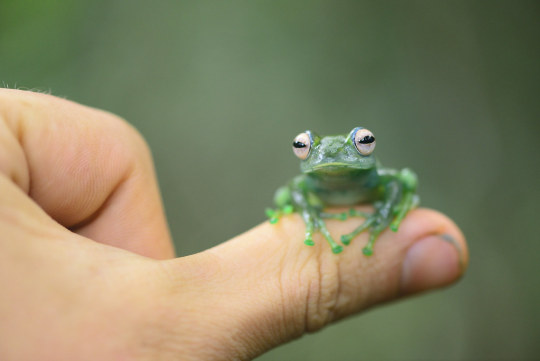
Boophis andreonei by Mark Scherz
#Anura#Mantellidae#Boophis#Boophis andreonei#frog#frogs#animal#animals#biology#nature#wildlife#fauna#amphibian#amphibians#zoology#herpetology#herps#critter#critters
1K notes
·
View notes
Photo
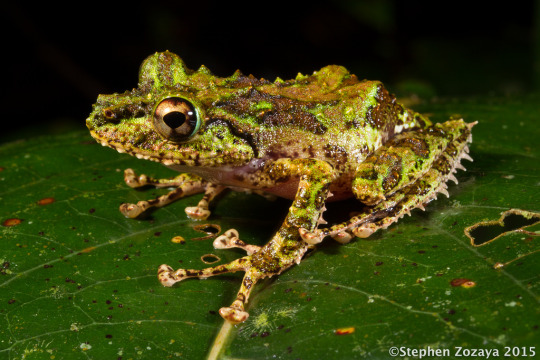
Spinomantis fimbriatus by Stephen Zozaya
Mongevo, Ranomafana National Park, Madagascar.
105 notes
·
View notes
Photo

White Folohy Madagascar frog (Gephyromantis luteus)
Photo by Frank Vassen
#white folohy madagascar frog#gephyromantis luteus#duboimantis#gephyromantis genus#mantellinae#mantellidae#ranoidea#neobatrachia#anura#batrachia#amphibia#tetrapoda#vertebrata#chordata
246 notes
·
View notes
Photo

Thrilled to announce the description of one of the largest #frogs in #Madagascar, Mantidactylus radaka! It took a lot of sleuthing, including sequencing 120-year-old specimens, to be able to confidently describe this #newspecies! Its description was important, however, because these are among the frogs that are eaten by people in Madagascar, and they may be at risk of local over-harvesting, in additional to ongoing #deforestation and #habitatloss. You can find a link to get the PDF of the paper at http://www.markscherz.com/publications . . . . . . #science #taxonomy #systematics #museomics #taxonomcis #research #Mantidactylus #naturalhistory #herpetology #wildlife #animals #zoology #Mantellidae #rainforest #frog #diversity #peerreview #vertebrate #highthroughputsequencing #illumina #radaka #Malagasy #Sahona https://www.instagram.com/p/B_2LtWGgGyv/?igshid=ozlvb95cl13c
#frogs#madagascar#newspecies#deforestation#habitatloss#science#taxonomy#systematics#museomics#taxonomcis#research#mantidactylus#naturalhistory#herpetology#wildlife#animals#zoology#mantellidae#rainforest#frog#diversity#peerreview#vertebrate#highthroughputsequencing#illumina#radaka#malagasy#sahona
269 notes
·
View notes
Text
frog of the day :)
Boophis tephraeomystax, common names: Mantellid bright eyed frog, Dumeril’s bright eyed frog
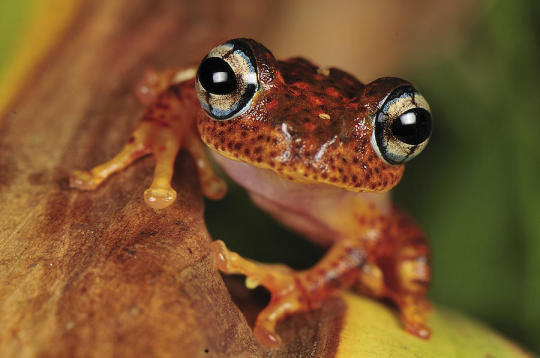
(Image source)
Habitat: Subtropical/tropical forests or shrublands, moist savannas. Live around areas with water, such as marshes or rivers.
Found in: Madagascar
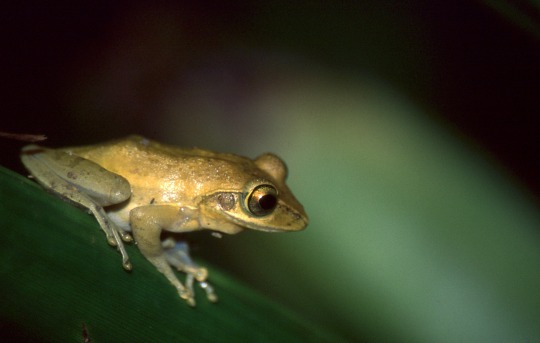
(Image source)
#frog of the day#Boophis tephraeomystax#FAMILY: Mantellidae (Mantelid frogs)#mantelid frogs#non-true tree frogs#GENUS: Boophis (bright eyed tree frogs)#bright eyed tree frogs
51 notes
·
View notes
Text

Beautiful Mantella or Splendid Mantella (Mantella pulchra), family Mantellidae, NE Madagascar
Poisonous.
photograph by Patrick Madagascar Tour Guide
250 notes
·
View notes
Photo

A Golden mantella frog (Mantella aurantiaca) in Madagascar, Africa
by Richard Eldon
#golden mantella#frogs#dart frogs#mantella aurantiaca#mantella#mantellidae#anura#amphibia#chordata#wildlife: madagascar#wildlife: africa
20 notes
·
View notes
Photo
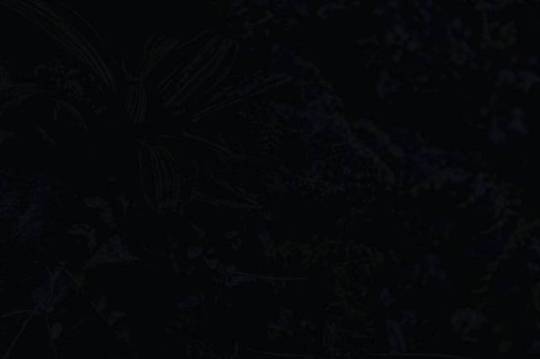
Red Mantella Frog/Mantella aurantiaca . . #redmantellafrog #animalia #chordata #amphibia #anura #mantellidae #mantella #mantellaaurantiaca #madagascar #exotic #animal #jakartaaquarium #brightcolor #red #nikond90 #nikkor (at Jakarta Aquarium)
#animal#jakartaaquarium#mantellaaurantiaca#nikond90#anura#madagascar#mantellidae#nikkor#mantella#chordata#exotic#animalia#amphibia#red#brightcolor#redmantellafrog
0 notes
Photo



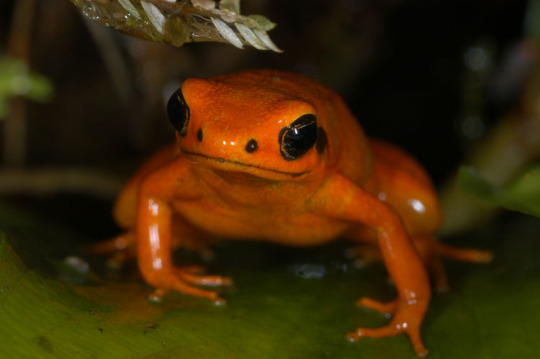
Here we see the extremely lovely black-eared mantella [Mantella milotympanum]. All 212 known species in the Mantellidae family are contained within the islands of Madagascar and Mayonette. The black-eared mantella is critically endangered, with one of it’s largest threats being over collection for sale in the pet industry. This individual was found in Central East Madagascar by photographer Dr. Peter Weish.
323 notes
·
View notes
Note
cast your moots as frog species
cuban tree frog - you @sapphossidechick
neobatrachia - @smol-evil-gremlin
mantellidae- @cinnamonstickrayofsunlight
stereocyclops -@malecacidd
african desert frog - @fairylightsandrainydays
glass frog - @sooshloveslouis
20 notes
·
View notes
Photo
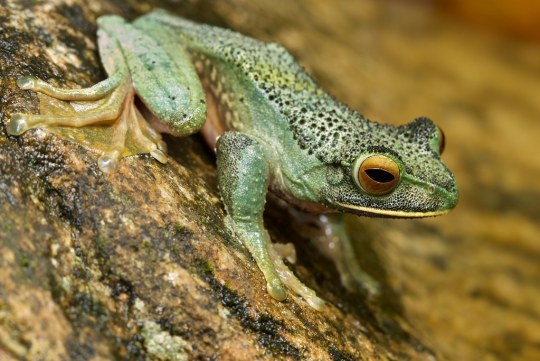
Boophis albilabris by Paul
#Anura#Mantellidae#Boophis#Boophis albilabris#frog#frogs#animal#animals#biology#nature#wildlife#amphibian#amphibians#zoology#herpetology#herps#critter#critters
275 notes
·
View notes